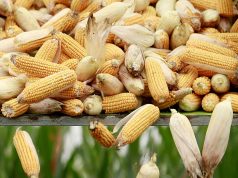Davao City mixed-use zoning ordinance creating problems for farms caught in residential buildup agriculture Davao farm farms residential CLUP
DAVAO CITY — The revised Davao City Comprehensive Land Use Plan (CLUP) and Zoning Ordinance, which was approved in 2013, has created confusion and subsequent problems for the agriculture sector.
The unhygienic practices of the various poultry and piggery operations in the city’s third district have been blamed for the fly infestation in the area early this year.
The poultry businesses in Mintal and Calinan have as much right to occupy the area, where their poultry farms are located, as the residents who have started to live in the area despite its being classified as an agricultural zone.
Councilor Mary Joselle D. Villafuerte, chair of the committee on health, said the city is alarmed by the fly infestation as it could cause the spread of disease.
The fly infestation has affected nine barangays in Calinan District and five barangays in Tugbok District.
The over 80 poultry and piggery owners who attended last Monday’s meeting at the City Council pointed out that their farms are located in an agricultural area and yet the construction of residences was allowed.
Elizabeth Banarez, representative of Mercks Poultry Farm, said while they are willing to abide by the laws especially on pollution, housing subdivisions should not have been allowed there in the first place as it has been identified as an agricultural area. While some of the farms have established good agricultural practices, some of the small scale poultry and hog farmers said the mitigating measures required by law are too expensive for them.
We cannot close these poultry farms or stop their businesses. They have been there even before it became a residential area, Vice-Mayor Paolo Z. Duterte said in an interview.
Mr. Duterte said the presence of flies is to be expected when there are poultry farms. However, he said, it is up to the City Health Office and the City Council committee on health to come up with a guidelines to ensure proper sanitary measures are observed.
Mr. Duterte admitted that the city has a problem with its zoning and it is not just in the Mintal and Calinan areas.He said even parts of the second district classified as industrial have become residential areas.
The Davao City Chamber of Commerce and Industry, Inc. (DCCCII) said it is willing to provide training for poultry and hog raisers to introduce best practices in fly control. The Chamber provided similar training during last year’s Davao Agricultural Trade Expo (DATE).
The hog and poultry farmers have agreed to find a solution to the problem by organizing themselves.
Councilor Danilo C. Dayanghirang, chair of the committee on finance, ways and means, said the CLUP is outdated and should be amended. He said the city’s population was reckoned at only 1,000,840 in 1995 but this has increased by 2.52% to 1,363,337 in 2007. Even the city’s urban population has substantially increased from 604,508 in 1990 to about 785,668 in 2007.
population increase will require the allocation of more land for residential,commercial and industrial purposes and this is expected to reduce the area that was once devoted to agricultural production, he said.
The city’s production of agricultural products like coconut, palay, corn and fruit trees excluding bananas have contributed to 4.08% to the aggregate production of the country.
The city has been classified as an agricultural center because of the availability of land that can be devoted to agricultural production. At least 40.23% or 98,151 hectares of the city’s total land was agricultural in 1996.
But while the city’s Development Plan acknowledges the need to steer the city towards agricultural development, there is a need to shift from purely agricultural development to agri-industrial development. — Carmencita A. Carillo



